How to Grow Asparagus: Simple Steps for Yearly Harvests
- February 28, 2024
- 0 comment
Asparagus, a perennial vegetable known for its unique flavor and nutritional benefits, is a welcome addition to any home garden. Growing asparagus may require patience, but the rewards of harvesting your own spears for years to come make it a worthwhile endeavor. This article serves as a comprehensive guide to help beginners successfully cultivate asparagus in their gardens.
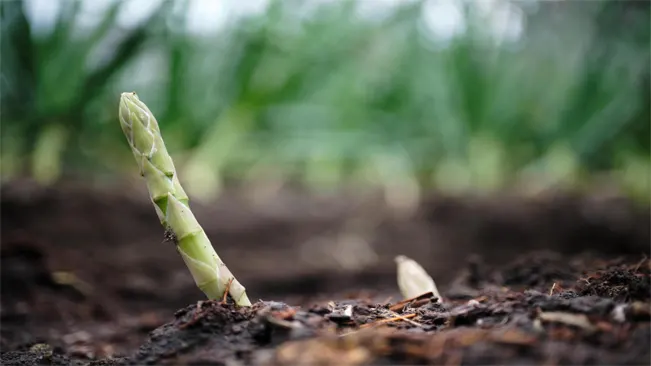
Nutritional Benefits of Asparagus
| Benefit Category | Details |
|---|---|
| Nutritional Value | High in vitamins A, C, E, K, and B6; rich in folate, iron, copper, calcium, protein, and fiber. |
| Antioxidant Properties | Contains various antioxidants such as flavonoids and polyphenols, which help combat oxidative stress and may reduce the risk of chronic diseases. |
| Heart Health | The high levels of folate in asparagus can help lower levels of a harmful amino acid known as homocysteine, which is linked to cardiovascular diseases. |
| Digestive Health | High in fiber, which promotes digestive health and regular bowel movements; also contains inulin, a prebiotic that supports healthy gut bacteria. |
| Diuretic Effects | Contains high levels of the amino acid asparagine, which acts as a natural diuretic, helping to flush excess salt and fluid from the body, beneficial for people with high blood pressure or other heart-related diseases. |
| Pregnancy Health | High folate content is crucial for pregnant women as it helps in the formation of the neural tube and can reduce the risk of birth defects. |
| Weight Management | Low in calories and high in water content, making it a great addition to a weight loss diet. |
| Improved Mood | Contains tryptophan, an amino acid that can help boost serotonin levels in the brain, which is linked to improved mood and reduced feelings of depression. |
| Anti-Inflammatory Properties | Contains various compounds that have anti-inflammatory properties, which can be beneficial in reducing chronic inflammation and associated diseases. |
| Bone Health | Good source of vitamin K, which is essential for bone health and blood clotting. |
List on How To Grow Asparagus
- Understanding Asparagus
- Selecting a Site
- Preparing the Soil
- Choosing Asparagus Varieties
- Planting Asparagus
- Caring for Asparagus Plants
- Harvesting Asparagus
- Managing Pests and Diseases
Understanding Asparagus
Asparagus (Asparagus officinalis) is a hardy perennial plant. It’s known for its edible young shoots, or ‘spears’, which emerge in spring. One unique aspect of asparagus is that once planted, it can produce spears for over 20 years, making it an excellent long-term crop for a dedicated section of your garden.
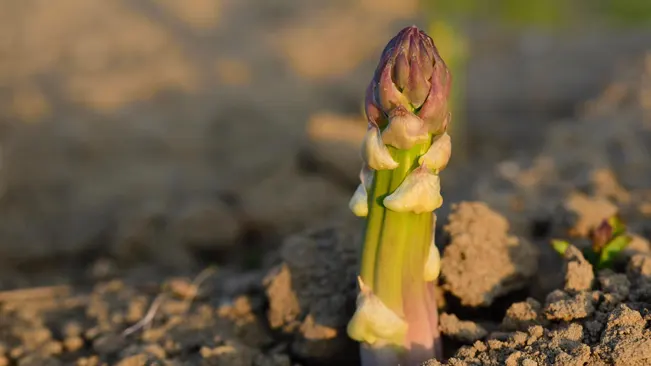
Selecting a Site
Asparagus thrives in full sun and well-drained soil. Choose a location that receives at least 6-8 hours of sunlight daily. Avoid areas that retain water or are prone to flooding, as this can lead to root rot.
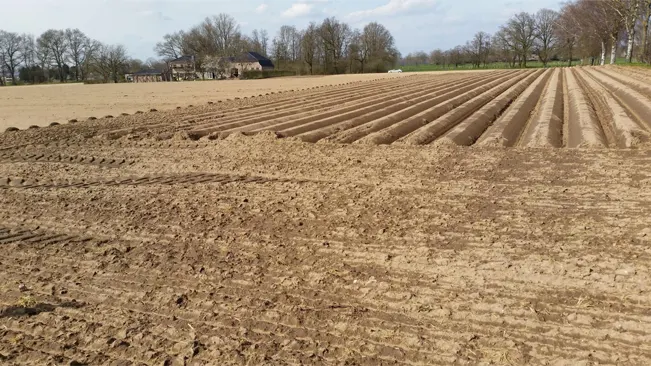
Sunlight Requirements
- Asparagus plants require full sun, which means they need direct sunlight for at least 6-8 hours each day. This amount of sunlight is essential for the plants to grow strong and healthy. The more sunlight asparagus receives, the better it will grow and produce.
Soil Drainage
- Well-drained soil is vital for asparagus because these plants are particularly susceptible to root diseases, which are often caused by too much moisture around the roots. You should choose a site where water doesn’t pool after a rain. If your soil is heavy or clayey, consider raising the beds to improve drainage or amend the soil with organic matter to increase its porosity.
Soil Quality
- While asparagus is adaptable to a variety of soil types, it performs best in rich, loose soil. Enhancing your soil with compost or well-rotted manure before planting will help provide the nutrients the asparagus needs for good growth.
Avoiding Waterlogged Areas
- Steer clear of areas that are prone to flooding or have poor drainage. Prolonged exposure to waterlogged conditions can lead to root rot, a serious condition that can severely damage or kill asparagus plants.
Preparing the Soil
Asparagus prefers a slightly acidic to neutral soil pH, between 6.5 and 7.5. Before planting, it’s important to prepare the soil by removing weeds and incorporating plenty of organic matter, such as compost or aged manure, to improve soil fertility and texture.

Soil pH and Texture
- Asparagus plants thrive in soil with a slightly acidic to neutral pH, ranging between 6.5 and 7.5. This pH range ensures the availability of essential nutrients to the plants.
- The texture of the soil should be well-draining to prevent waterlogging, which can cause root rot. Asparagus does well in sandy loam soils, which have good drainage and sufficient organic matter.
Weed Removal
- Before planting asparagus, it’s important to thoroughly clear the area of weeds. Weeds can compete with asparagus for nutrients and water, reducing the health and yield of your asparagus plants.
- Continuous weeding is necessary throughout the growing season, but starting with a weed-free bed makes this task easier.
Incorporating Organic Matter
- Organic matter, such as compost or aged manure, is vital for improving soil fertility and texture. It adds essential nutrients to the soil and improves its structure, which aids in water retention and root development.
- Spread a generous layer of organic matter over the soil and work it into the soil to a depth of at least 6 to 8 inches. This step is crucial because asparagus is a long-term crop, and the initial soil preparation will impact its growth for years.
Choosing Asparagus Varieties
Choosing the right variety of asparagus for your garden is an important decision that depends on your climate, soil, and personal taste preferences. Here’s a closer look at some of the common asparagus varieties mentioned:
Jersey Giant
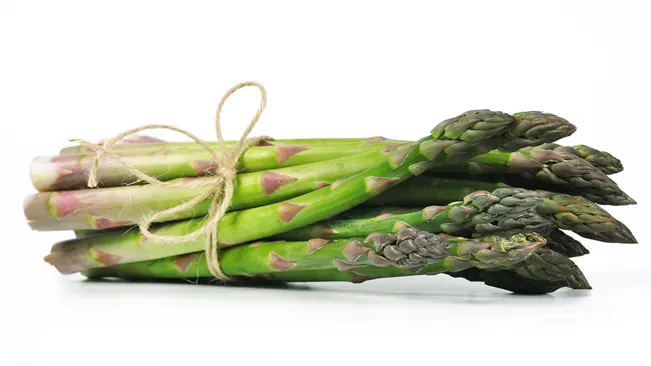
- This is a very popular variety of green asparagus known for its high yield and disease resistance. ‘Jersey Giant’ is especially suited for cooler climates and is a male-dominant hybrid, meaning it typically produces larger, more robust spears and fewer seeds compared to female plants. It’s a great choice if you’re looking for a hardy, productive variety.
Purple Passion
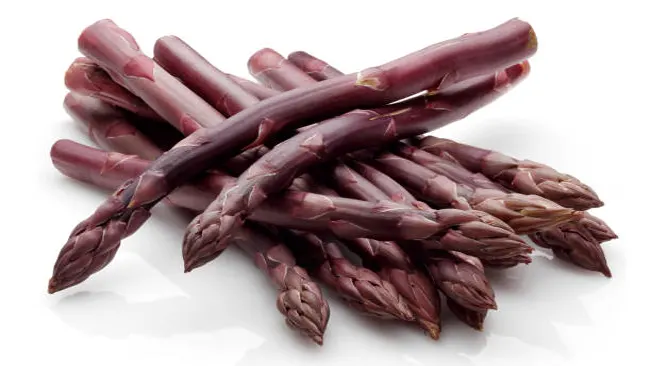
- As the name suggests, ‘Purple Passion’ produces attractive, deep purple spears that are known for their sweetness and tenderness. When cooked, the spears turn green. This variety is less stringy than green varieties and is often preferred for its flavor. It’s a good option if you’re looking for something a bit different in your garden and on your plate. It’s worth noting that ‘Purple Passion’ can tolerate a range of climates but might thrive best in areas with warmer winters.
Mary Washington
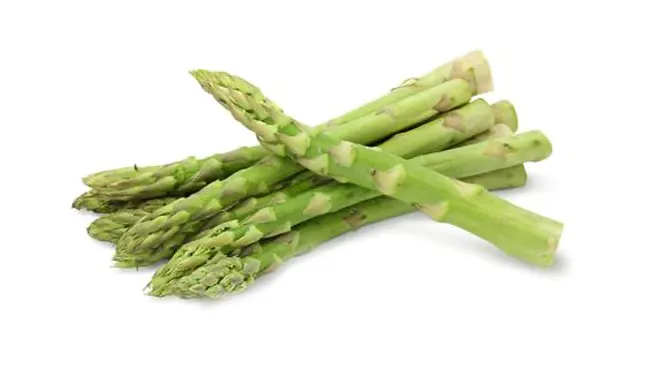
- This is a classic, heirloom variety that has been popular for many years. ‘Mary Washington’ is known for its excellent flavor and good spear quality. It’s a hardy variety, resistant to rust and fusarium wilt, making it a good choice for gardeners who prefer traditional varieties with a proven track record. This variety is also notable for being one of the older, open-pollinated (as opposed to hybrid) varieties still widely grown.
When selecting a variety, consider the following factors:
- Climate Tolerance: Make sure the variety you choose is suited to your local climate. Some asparagus varieties are more tolerant of heat or cold than others.
- Soil Conditions: While asparagus is adaptable to various soil types, some varieties may perform better in your specific soil conditions.
- Disease Resistance: Look for varieties that are resistant to common asparagus diseases prevalent in your area.
- Spear Size and Quality: Some gardeners prefer thicker spears, while others might prefer thinner, more tender spears.
- Yield: If productivity is a key concern, choose a variety known for its high yield.
Planting Asparagus
Asparagus is commonly planted in early spring as one-year-old crowns. Dig a trench about 12 inches wide and 6-8 inches deep. Place the crowns in the trench 18 inches apart, spreading the roots. Cover with 2-3 inches of soil and gradually fill in the trench as the spears grow.
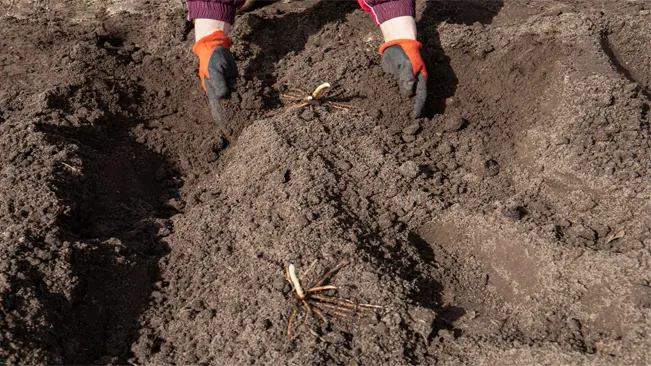
Timing
- Asparagus is typically planted in early spring. The timing is crucial because the soil needs to be warm enough for planting, yet cool enough to allow the plants to establish themselves before the heat of summer.
Choosing Crowns
- Asparagus is usually planted using one-year-old crowns, which are the root systems of previously grown asparagus plants. These crowns are preferred over seeds as they significantly speed up the time to your first harvest.
Preparing the Bed
- The bed should be prepared in an area that receives full sunlight. Start by digging a trench about 12 inches wide and 6-8 inches deep. This depth is important as it allows the roots to spread out and down, providing a strong foundation for the plants.
Soil Condition
- Asparagus prefers well-drained soil. If your soil is heavy or clay-like, you may need to amend it with organic matter such as compost or aged manure to improve drainage and nutrient content.
Planting the Crowns
- Place the asparagus crowns in the trench, spacing them about 18 inches apart. This spacing gives each plant enough room to grow and mature over the years.
- Spread out the roots of each crown in the trench. This helps the roots grow more easily into the surrounding soil.
Covering the Crowns
- Initially, cover the crowns with only 2-3 inches of soil. Do not fill the trench completely at this stage.
- As the spears start to grow and reach about 4-5 inches in height, gradually add more soil to the trench. Eventually, the trench should be filled back to ground level. This gradual filling encourages the spears to grow upwards and strengthens the plants.
Caring for Asparagus Plants
Watering is crucial, especially during the first two years. Keep the soil consistently moist but not waterlogged. As the plants grow, add mulch to conserve moisture and suppress weeds. Fertilize in early spring and again after the harvest season with a balanced fertilizer.
Watering
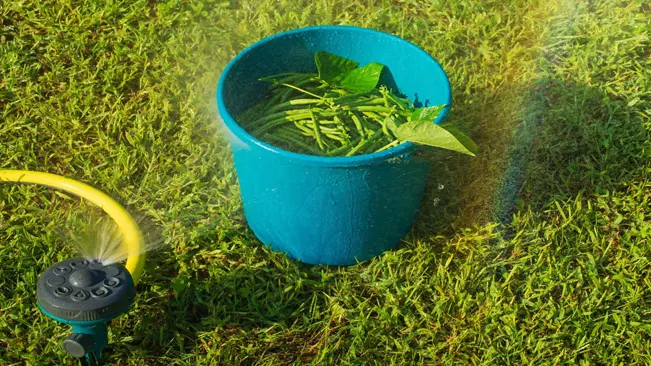
- Proper hydration is essential, particularly in the initial growth years. Asparagus plants have deep roots, so they need regular and deep watering. During the first two years, it’s crucial to maintain consistent soil moisture to help establish the plants. However, be cautious not to overwater, as waterlogged soil can lead to root rot. The goal is to keep the soil moist, not saturated.
Mulching
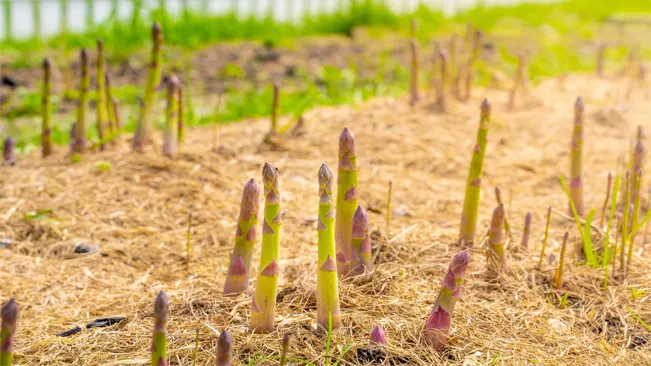
- Applying mulch around asparagus plants is beneficial for several reasons. Mulch helps retain soil moisture, reducing the need for frequent watering. It also helps regulate soil temperature, keeping the roots cooler in summer and warmer in winter. Additionally, mulch suppresses weed growth, which is important because asparagus does not compete well with weeds. Organic mulch, such as straw or compost, can also contribute to the overall soil fertility as it breaks down.
Fertilization
- Feeding asparagus plants is vital for their growth and productivity. Fertilize the plants in early spring as new growth begins. Use a balanced fertilizer, such as a 10-10-10 formula, to provide essential nutrients. After the harvest season, fertilize again to replenish nutrients used during growth. This post-harvest fertilization is important for ensuring the plants have enough resources to develop strong roots and store energy for the next growing season.
Harvesting Asparagus
Do not harvest spears during the first two years after planting. This allows the plants to establish a strong root system. In the third year, you can harvest spears over a 4-6 week period, when they reach about 8 inches tall. Cut or snap spears at ground level.
Establishing the Asparagus Bed
- First Two Years: After planting asparagus crowns, it’s crucial not to harvest any spears for the first two years. This period allows the plants to develop a robust and extensive root system. During these years, the asparagus plants use their energy to grow strong roots rather than producing harvestable spears.
Beginning to Harvest
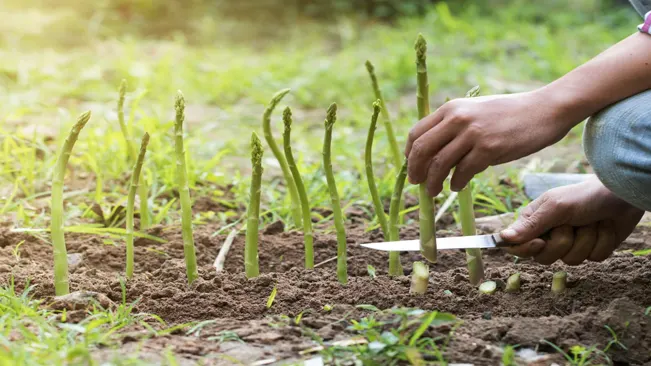
- Third Year: In the third year after planting, the asparagus plants are typically strong enough to support a limited harvest. This is when you can start enjoying the fruits of your labor.
- Harvest Period: The harvesting window lasts about 4-6 weeks in spring, usually starting when the daily average temperature begins to stay above 50 degrees Fahrenheit (10 degrees Celsius).
- Spear Size: Harvest asparagus spears when they are about 8 inches tall and before the tips start to open. The spears should be firm and straight.
Harvesting Technique
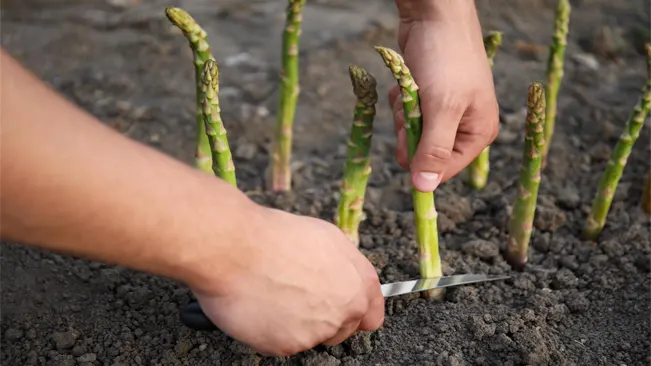
- Cutting or Snapping: You can either cut or snap the spears at ground level. To cut, use a sharp knife and slice the spear just below the soil surface. To snap, bend the spear towards the ground until it breaks naturally. This break point is generally where the spear is tenderest.
- Frequency: During the peak of the season, you may need to harvest every day or two, as asparagus can grow quickly in ideal conditions.
Post-Harvest
- Allowing Fern Growth: After the harvest period, allow the remaining spears to grow into tall, fern-like plants. This growth is essential as it helps the plants to photosynthesize and store energy in the roots for the next season.
- Cutting Back in Fall: In the fall, once the ferns have turned yellow or brown, they can be cut back to the ground. This helps to prepare the plants for winter and can reduce the risk of disease.
Maintaining Productivity
- Yearly Harvest Increase: Each year, as the plants mature, you can extend the harvesting period. Mature plants can be harvested for 6-8 weeks.
- Care and Maintenance: Continue to care for your asparagus bed by watering, weeding, and fertilizing appropriately. A well-maintained asparagus bed can produce for 15 years or more.
Managing Pests and Diseases
Common pests include asparagus beetles and slugs. Diseases like fusarium wilt and rust can also affect asparagus. Regular monitoring and good cultural practices, such as crop rotation and proper sanitation, can help minimize these issues.
Common Pests
Asparagus Beetles
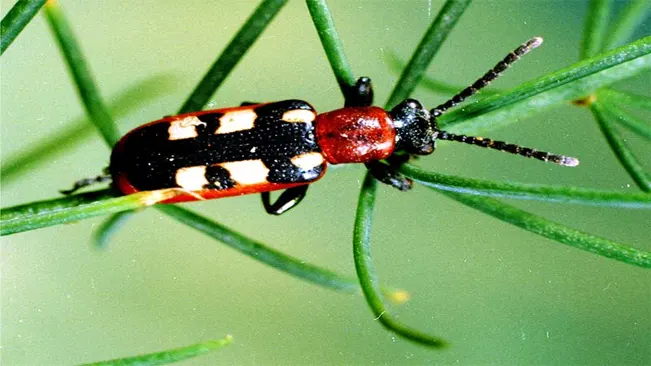
- Types: There are two main types: the common asparagus beetle and the spotted asparagus beetle.
- Damage: They chew on spears, ferns, and lay eggs on the plants, which can lead to reduced yield and plant vigor.
- Management: Handpick beetles and eggs in small gardens. Use floating row covers to protect the plants. Insecticides can be used, but it’s important to follow label instructions, especially considering the edible nature of asparagus.
Slugs
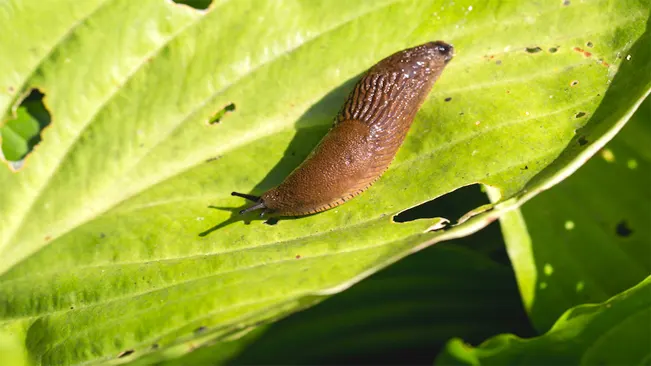
- Damage: Slugs feed on the tender shoots and can cause significant damage, especially in damp conditions.
- Management: Use slug baits, traps, or create barriers with diatomaceous earth or copper. Encouraging natural predators like birds and toads also helps.
Common Diseases
Fusarium Wilt
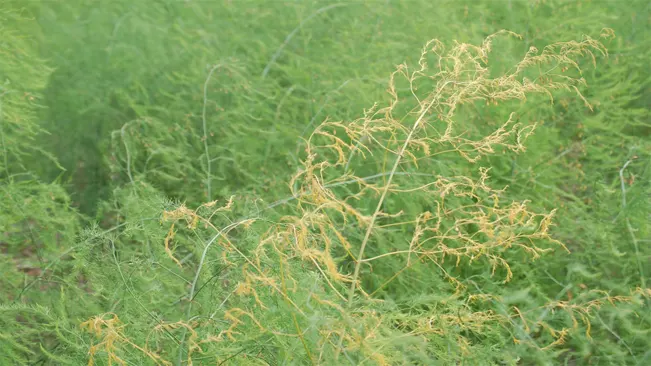
- Symptoms: Yellowing and wilting of lower foliage, reduced spear size, and eventual plant decline.
- Cause: Soil-borne fungus Fusarium oxysporum.
- Management: Use resistant varieties, ensure good drainage, and practice crop rotation. Infected plants should be removed and destroyed.
Asparagus Rust
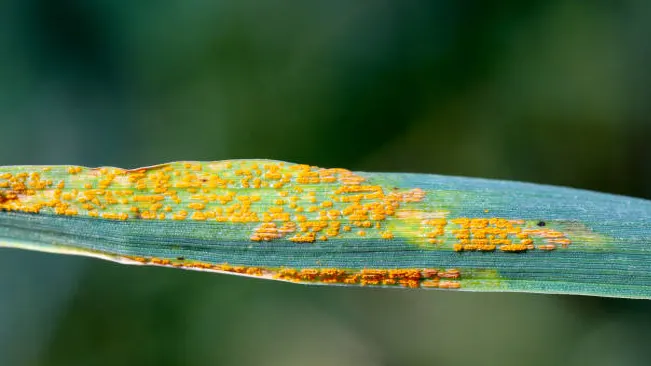
- Symptoms: Orange, reddish, or black spots on ferns, leading to defoliation and weakened plants.
- Cause: Fungus Puccinia asparagi.
- Management: Apply fungicides as needed, particularly during humid or wet conditions. Remove and destroy affected plant material at the end of the season.
Cultural Practices for Management
- Regular Monitoring: Regularly inspect your asparagus plants for signs of pests and diseases. Early detection is key to effective management.
- Crop Rotation: Avoid planting asparagus in the same spot where it or related plants have grown recently to reduce disease risks.
- Sanitation: Keep the asparagus bed clean. Remove and destroy any infected plants or plant parts. Clean up plant debris at the end of the season to reduce overwintering sites for pests and diseases.
- Soil Health: Maintain healthy soil with good drainage and adequate organic matter. This can help plants be more resilient against pests and diseases.
- Balanced Fertilization: Over-fertilization, especially with nitrogen, can make plants more susceptible to diseases. Use fertilizers judiciously.
Integrated Pest Management (IPM)
- Consider using an IPM approach, which involves combining various strategies (cultural, mechanical, biological, and chemical) in a way that minimizes environmental impact. This includes encouraging beneficial insects that prey on pests and using chemical controls only as a last resort.
Conclusion
Growing asparagus requires patience and care, but the reward of fresh, homegrown spears is incomparable. With the right preparation and maintenance, your asparagus bed can provide a bountiful harvest for many years, making it a gratifying addition to your garden.
FAQs (Frequently Asked Questions)
- What is the best time to plant asparagus?
Asparagus is typically planted in the early spring, as soon as the soil can be worked. - How long does it take for asparagus to be ready for harvest?
Asparagus usually takes about two to three years from planting to produce a full harvest. You can start harvesting lightly in the second year. - What kind of soil is best for asparagus?
Asparagus prefers well-drained soil with a slightly acidic to neutral pH, between 6.5 and 7.5. - How much sunlight does asparagus need?
Asparagus plants require full sun, meaning at least 6-8 hours of direct sunlight per day. - How do I prepare the bed for planting asparagus?
Prepare the bed by digging trenches about 12 inches wide and 6-8 inches deep. Add organic matter like compost or well-rotted manure to enrich the soil. - How far apart should I plant asparagus crowns?
Plant asparagus crowns about 12-18 inches apart in rows that are 3-4 feet apart. - How much water does asparagus need?
Asparagus needs consistent moisture, especially during the first two growing seasons. Water the plants regularly to keep the soil moist but not waterlogged. - Do I need to fertilize asparagus plants?
Yes, asparagus benefits from fertilization. Apply a balanced fertilizer in early spring and again after the harvest season. - How do I protect asparagus from pests and diseases?
Keep an eye out for common pests like asparagus beetles and diseases like fusarium wilt. Good garden hygiene, crop rotation, and organic pesticides can help manage these issues. - When and how do I harvest asparagus?
From the third year, harvest asparagus spears when they are about 8 inches tall and the tips are still tight. Cut or snap them off at ground level.

Kristine Moore
Forestry AuthorI'm Kristine Moore, a seasoned garden landscaping professional with over 30 years of experience. My extensive career has been dedicated to transforming outdoor spaces into stunning, sustainable landscapes. With a deep understanding of horticulture, design principles, and environmental stewardship, I have become a respected figure in the field, known for creating harmonious, visually appealing, and eco-friendly gardens. My commitment to excellence and continuous learning in landscaping trends and techniques has solidified my reputation as an expert in garden design and implementation.




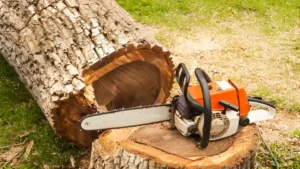
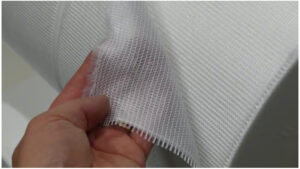




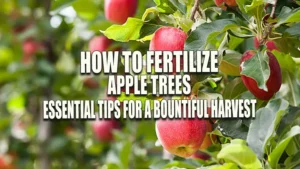


Leave your comment